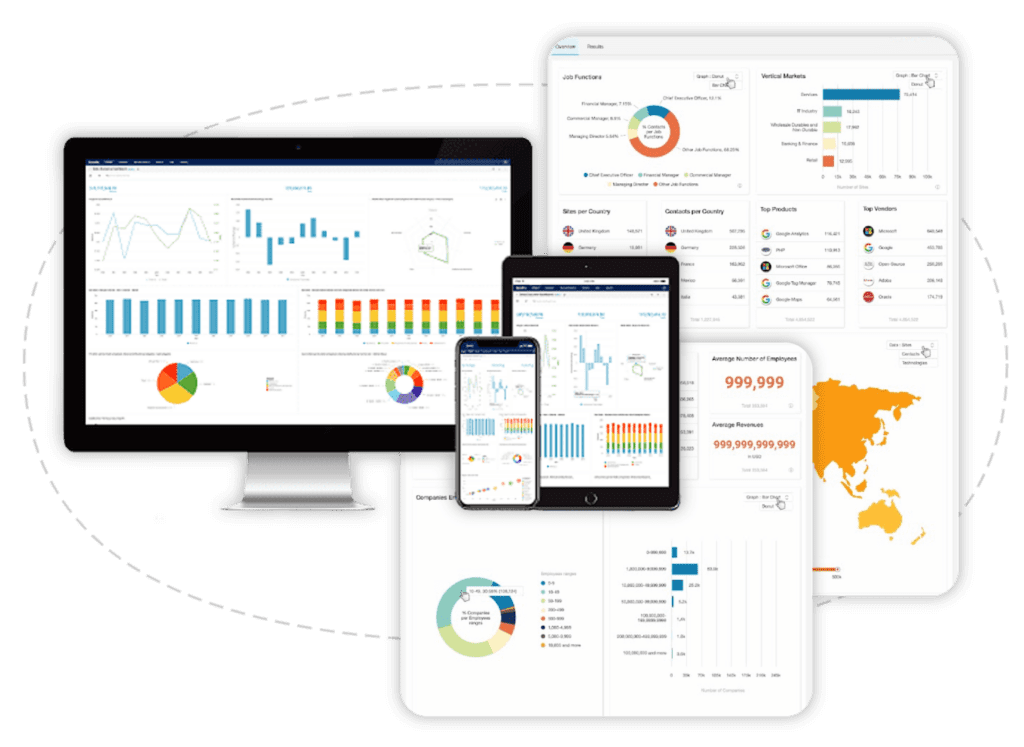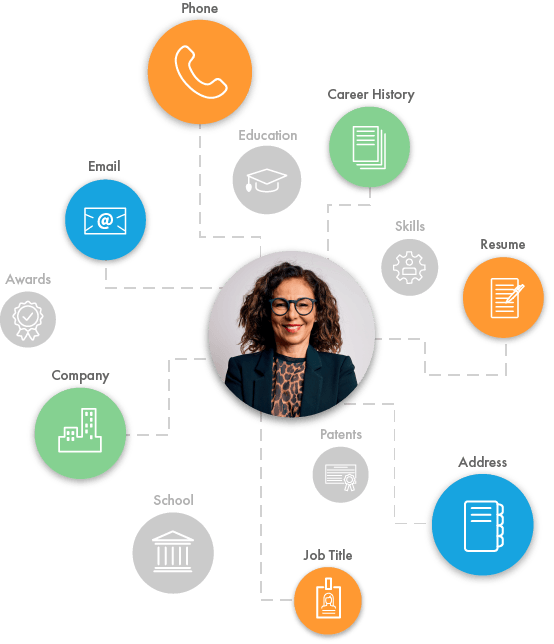Competition for talent is fierce and companies are discovering the need to adapt to worldwide changes through effective talent management. Read on to learn about the relevance of workforce planning today and cutting-edge B2B data and tools for efficient and data-driven workforce planning.
The Importance of Workforce Planning in Today’s Business Landscape
According to the World Economic Forum, more than 1 billion people by 2030 will need reskilling to keep up with technology’s rapid transformation. Furthermore, 29% of recruiters also believe the skills gap has increased. This number is evident in companies focusing on skills-based hiring over the requirements of having a Bachelor’s degree.
The working population aged 50 and above has increased by 37% in 2020, causing more multigenerational workplaces. In light of this, workforce planning is more vital now than ever. It anticipates coming trends and changes that will inevitably affect the organization. It plans ahead of the business landscape and market changes through hiring strategies, talent acquisition, and more.
To do an efficient workforce planning, organizations will have to address few areas like:
- Understand the critical components of a strategic workforce plan
- Leveraging data and analytics and choose the right provider
- The tools and software required to implement the strategy
Critical Components of a Strategic Workforce Plan
Some critical components of a strategic workforce plan are:
- A talent and acquisition and retention strategy
- A succession planning ensuring a smooth transition of talents
- A mitigating risk strategy addressing workforce challenges
Talent and retention strategy
A strategic workforce plan aligns an organization’s workforce with its strategic goals and objectives. To do so, it must develop a talent acquisition and retention strategy. Critical components of that strategy can include:
- Workforce Analysis
This key involves assessing the current workforce. The process takes inventory of the skills, competencies, demographics, and performance. It helps identify strengths and weaknesses within the workforce. The accumulated data provides insights into the organization’s current capabilities. - Data and Analytics
Effective strategic workforce planning relies on accurate and up-to-date data. Therefore, organizations should establish systems for collecting, analyzing, and utilizing workforce data. By doing so, organizations can use said data for decision-making, tracking progress, and making necessary adjustments. - Future Workforce Needs
The workforce plan should anticipate future requirements based on the organization’s strategic goals. This process involves using the data collected in the first step to identify the skills, knowledge, and competencies needed to support the organization’s future objectives.
- Gap Analysis
A gap analysis can identify discrepancies or shortages in skills or talent by comparing the current workforce with future needs. This analysis helps prioritize areas that require attention. It guides strategy development to address those gaps.
- Recruitment and Talent Acquisition
A strategic plan includes strategies for attracting, recruiting, and selecting qualified candidates. It involves developing targeted recruitment campaigns or exploring diverse talent pools. The HR development may also leverage technology to reach the talent pool. They may also partner with educational institutions.
- Training and Development
Investing in training and development programs is crucial for building a skilled and adaptable workforce. It also encourages talent retention. Therefore, a strategic plan should outline initiatives for enhancing the critical skills of existing employees. This stage involves providing relevant workforce development and training programs -including mentoring and coaching.
- Succession Planning
Succession planning involves identifying critical positions within the organization. Then it transitions to strategy development to ensure a smooth transition when those positions become vacant. It may include leadership development programs, talent pipelines, and knowledge transfer mechanisms.
- Retention and Engagement
Retaining top talent is essential for organizational success. A workforce plan should include strategies to enhance employee engagement. The program must promote a positive work culture and manage conflicts appropriately. This step can involve interactive employee diversity, equity, and inclusion training. Retention and engagement must also tackle competitive compensation and benefits to create career growth and advancement opportunities. - Monitoring and Evaluation
A strategic workforce plan should include mechanisms for monitoring implemented strategies. Emerging trends and other external factors can affect the workforce and its data. Regular assessments and feedback loops allow for adjustments and improvements to the plan.
Succession planning, ensuring a smooth transition of talent
Succession planning is also critical to a strategic workforce plan. It identifies and develops future organizational leaders to ensure a smooth talent transition. It also involves identifying key positions, assessing high-potential employees, and implementing strategies to groom and prepare potential successors in their career development. It can include mentorship programs to ensure proper knowledge transfer.
Developing future leaders and high-potential employees is a valuable investment for the organization. Here is the process included in succession planning to find them and ensure their development and succession would go smoothly for the organization.
Leveraging Data and Analytics for Successful Workforce Planning

Give insights with workforce analytics and data visualization
It also improves the candidates’ experience with the organization. Clear communication, timely feedback, and a smooth application process give the impression of organizational efficiency.
Moreover, ProfileFinder is powered by Rhetorik’s unique AI models:
- Rhetorik occupational model: AI-powered classification of job titles. The ROC includes job titles translated from 46 different languages across more than 164 countries supporting your efforts to harmonize job architecture.
- Skills extraction model: AI-powered extraction of 32,000 soft and hard skills extracted and inferred from public professional profiles. Helps you to score and benchmark skills-based organizations and enables automatic discovery and evaluation of new emergent skills.
- Skills and job titles normalization and standardization model: AI-powered model providing entity resolution of companies, employers, job roles, locations, profiles, and skills to unify your data sets. The model is fuelled by 235M raw job titles and normalized to 199M job titles, increasing efficiency by at least 20%. This standardization and normalization enable organizations to quickly query and benchmark across territories and train their models to be more predictive. Data normalization is very important for workforce planning because it helps eliminate errors and inconsistencies that can arise from different sources using different formats or standards. This can improve the accuracy of the data and the insights it provides. It also provides easier analysis: Normalized data is easier to analyze and compare because it is consistent and standardized. This can help organizations more easily identify trends, patterns, and insights that can inform their workforce planning and analytics efforts. Finally, normalizing data can save time and effort by streamlining the data collection and analysis process. It can also make it easier to integrate data from different sources, allowing organizations to make more informed decisions with a broader range of data.

Want to know how our other tools can help you?
Your personalized demo can show you how we can fast-track your workforce planning.
Conclusion
For an efficient workforce planning, organization need to take into account many components. They need to understand and manage critical components of workforce planning like developing a good talent and acquisition and retention strategy, develop a succession planning ensuring a smooth transition of talent and ensuring a mitigating risk strategy addressing workforce challenges. Moreover, organizations should base their decisions on accurate, up do data and reliable B2B professional profiles data like the one provided by ProfileFinder, powered by Rhetorik. Finally, organizations can take advantage of the tools and software used for efficient workforce planning like applicant tracking systems (ATS) and recruitment software to automate the stages of the hiring process.